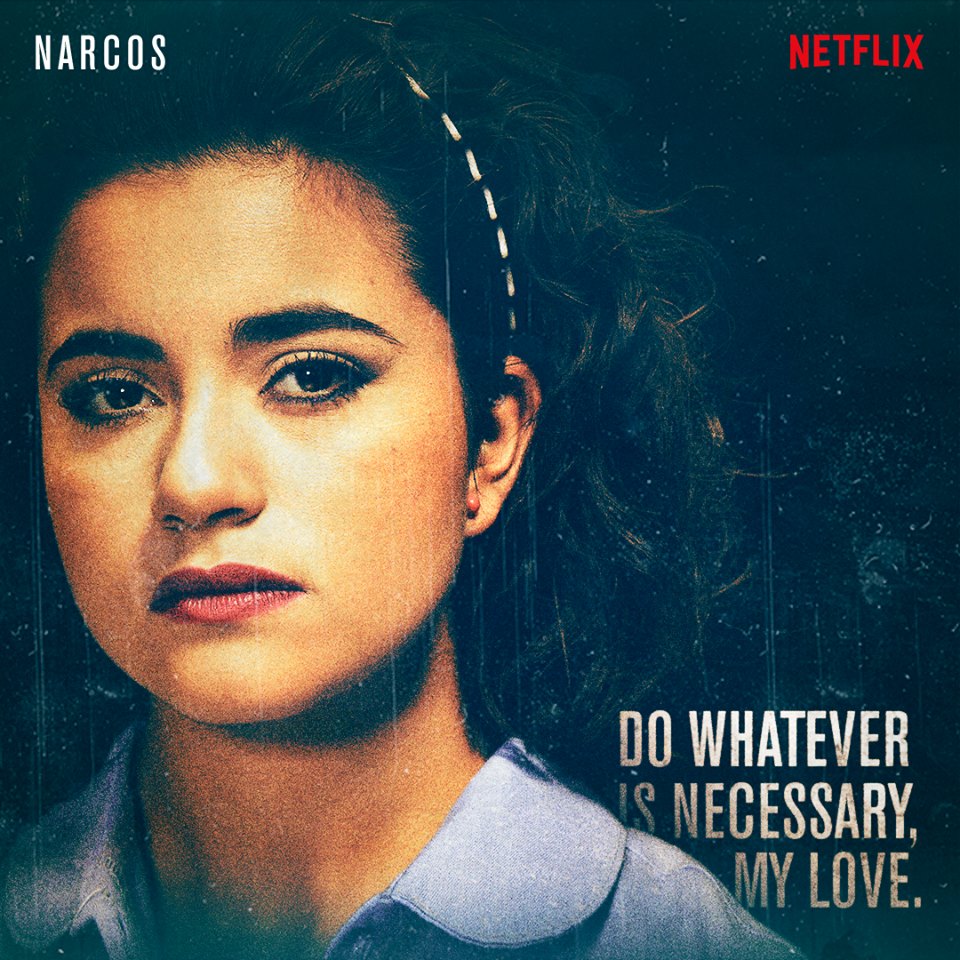
Traditional television programming allows networks to release information that parallels the show's plot, resulting in a consistent flow of engaged fans week-over-week. However, Netflix releases all episodes at once, which made it necessary to structure our campaign with a focus on keeping audiences engaged past their initial binge. The Netflix original we were tasked with launching was the Summer hit, Narcos, which tells the story of the Medellín drug cartel. Our primary goals for the initial stage of the campaign were building awareness and anticipation. After the launch, we shifted our focus to driving viewership, and creating a relatable social identity that transcended the world of the show. We set out to create a breadth of work that matched the level of quality, entertainment, and depth that made the show itself fantastic. Ultimately, we wanted our audience to find substance and value in each of our social channels in addition to just entertainment. Our goal was to create an abundance of content that lived for specific reasons pertaining to each platform's functionality and audience. Our goal was to make people fall in love with the story of Narcos, rather than the simply the show itself. We knew if the Narcos channels could each stand on their own, but feed into one another as part of a larger narrative, that would be a win for us.
Our overarching strategy was to provide relatable depth for the Narcos brand while bringing the fantastical true story of the series into perspective through culture. To accommodate an audience that watched the show at different paces, we adopted tactics that phased out the show's thematics, rather than plot line. We selected thematics from the show, a period piece set in the 1980s, that are still relevant in culture today such as moral ambiguity, excessive wealth, and cocaine culture.
Each platform served its own purpose as a part of this overall strategy, bringing to life the thematics that connected to users in that space. Instagram allowed us to explore our voice that embraced dark humor. We took advantage of Instagram and created a gallery of content that communicated the consistent visual tone of our overall campaign. Facebook helped us dive into the darker, more dramatic thematics of the show, and with the largest population of desktop users, it allowed us to utilize original, long form videos.
With each platform working in different ways, we were able to create platform specific micro campaigns, such as Smuggle and Seek, a Facebook story that detailed the escalating smuggling tactics between the DEA and Cartel over a two week time span. Or our DEA vs. Cartel content series, which used transparent PNGs to hack the functionality of Twitter. Across all platforms we created over three hundred and seventy five original assets, which helped us create an extensive breadth of content. This allowed us to touch on each aspect of the show and enlighten audiences about the true story behind Narcos in a variety of unique ways. We created #Cokenomics, an infographic series that compared the staggering facts and figures of the cartel with relatable visual which were shared across channels. Each platform focused on reactivity to cultural moments; however, we activated real-time response tactics in unique ways depending on the platform. For example, when Facebook released their reaction emojis, we created our own versions that showcased the Narcos characters. Here we also engaged with the President's environmental address, whereas on instagram and twitter we tapped into cultural moments by utilizing hashtags and cultural conversations. We seamlessly integrated Narcos into Trump phenomena with Pablo's Make Colombia Great Again hat on the night of the first #GOPdebate. Our post of Pablo's massive 1980s cell phone that told audiences he'd forgotten to "upgrade" to the #iPhone6S, was one of our top performing posts ever. By distinguishing platform usage we'd solidified a social identity that provided cultural substance and variety for our fans. We sought to blend the perfect mix of planned, thematic-centered creative, and real-time cultural responses. The success of this reactivity was in part from our highly active community management. We listened and engaged with audiences in different ways pertaining to each platform, which enabled us to collect insights about the platform's distinct audiences.
After three short months, we'd amassed a social following of two million fans across the three platforms: Facebook, Instagram and Twitter. The show was a huge success, with two Golden Globe nominations and Netflix claiming it had more viewers than HBO's Game of Thrones. Each platform achieved it's own success. Twitter allowed us to engage with a multitude of high-profile fans such as Anderson Cooper, Mario Lopez, Piers Morgan and Ricky Gervais even months after the show's release. The platforms were unique, yet worked together to match the levels of quality, entertainment, and depth in the show. By activating real-time response tactics that pertained to each platform in unique ways, we'd solidified a social identity that provided cultural substance and insightful content for our fans. It also helped create some of our most engaged content. Our #iPhone6S post quadrupled our average engagement, and our #GOPDebate post was one of the top ten engaged instagrams on the night of the debates. Our #Cokenomics series earned over 100 thousand engagements and inspired a branded content takeover in the Wall Street Journal. By separating content across a variety of channels we avoided content fatigue, which helped us achieve 1.8 million engagements and sustained conversation well after the show's launch- a vital contribution to the success of any modern television series. We actually saw an increase in engagement in the latter two thirds of our campaign, helping afford Narcos the title of most mentioned Netflix original series on social in 2015.








